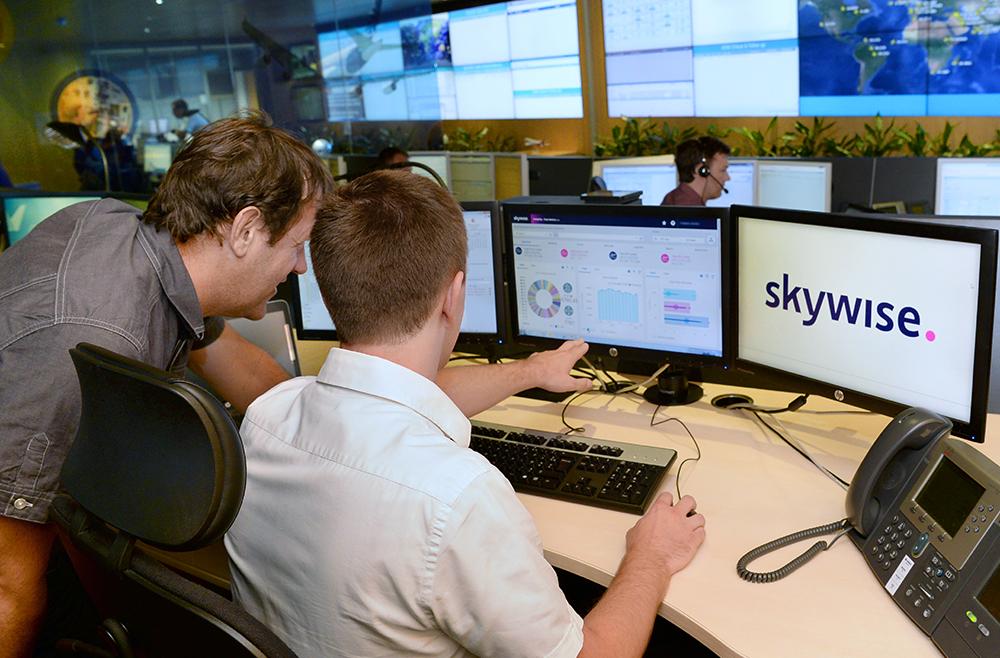
Airbus recently announced further enhancement of its Skywise digital platform at its recent Skywise Symposium in Istanbul. The platform will now offer additional tools and features that enable airlines, MROs, part traders and other users to easily perform more advanced actions, add applications, simulate scenarios and push data in real time to their own MRO IT systems.
This is just the most recent development in Skywise, a platform incorporating both data and applications to support predictive maintenance, along with many other functions. It is what Airbus calls an “ecosystem,” aimed at accelerating and expanding the exploitation of aviation data.
Skywise started five years ago as an internal tool to help Airbus ramp up production of its A350s by quickly collecting all relevant data. “We accelerated by 33% the overall delivery time of our A350 aircraft with the help of Skywise, mainly by reduction of lead time to resolve non-quality issues,” explains David Marty, head of digital solutions sales and marketing at Airbus Services.
Now, Skywise lets external users combine data from Airbus with their own data sources. Industry usage of Skywise has also expanded dramatically. Operators of about 10,000 aircraft, including both Airbus types and aircraft made by other OEMs, now use Skywise. More than 5,700 Airbus aircraft—nearly half its fleet—are now connected to the platform.
Most Skywise customers use the platform for their own purposes, such as increasing efficiency in flight operations, maintenance, inventory management, ground handling and so forth. For example, SKY Airlines saved significant maintenance costs by optimizing the allocation of aircraft by its Operational Control Center.
In addition, Airbus offers Skywise Predictive Maintenance +, which taps the connectivity of Airbus aircraft. The OEM’s Flight Operations and Maintenance Exchanger (FOMAX) comes with all new A320neo-family aircraft and can be retrofitted on A320ceos, giving the widely-flown narrowbodies the connectivity of A350s.
EasyJet reported that Skywise predictive tools helped it avoid 35 technical cancellations in August 2022. Airbus says Delta Air Lines mitigated more than 2,000 operational interruptions in its first year of Skywise use.
Asked how many airlines are now using Skywise Predictive Maintenance, Marty only says, “As of today we have a worldwide presence with customers in each region of the world.”
To facilitate data exchanges, Skywise can integrate data from a variety of systems, such as AMOS, Azure, SAP, Snowflake, Amazon Web Services, DataRobot, Hive, Databricks, Scale, TRAX, Ramco, Rusada software, Swiss-AS software, IBS Software, NetLine Suite, Conduce, Navblue, Sabre and Jeppesen. “Those are just examples of the various systems for which we have already performed successful connections in the past,” Marty says.
As a digital platform that hosts data and applications for a wide variety of aviation users and uses, including predictive maintenance, one could potentially compare Skywise to Lufthansa Technik’s Aviatar platform. However, Marty insists the two products differ significantly.
“The main difference is that Skywise is an open platform where customers can develop their own workflows and applications using on-the-shelf analytics capabilities, recently increased with machine learning and digital twins, while Aviatar customers can only access digital solutions developed by Lufthansa Technik,” says Marty.
“Aviatar is the only open platform focusing on tech-ops with open APIs to various airline and MRO IT ecosystems, including their flight and ground ops solutions,” responds Frank Martens, Lufthansa Technik’s senior director of sales for Aviatar and digital products. He adds that all of Aviatar’s predictive analytics are co-created with airlines. “All co-developed solutions are available off-the-shelf to other customers, if the required IP- and co-creation agreements are in place.”





